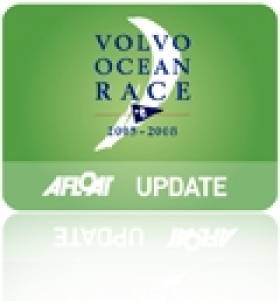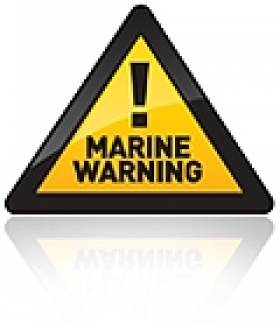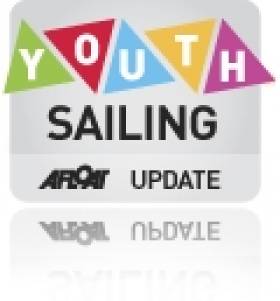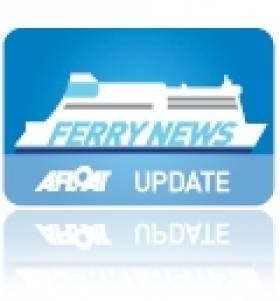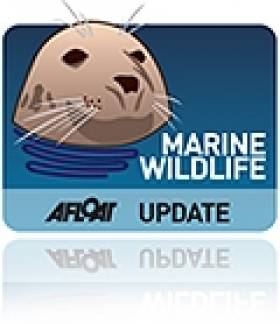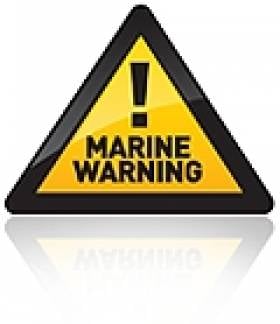Displaying items by tag: Wales
Cardiff Will Host Volvo Ocean Race in 2017-18
#VOR - The Volvo Ocean Race will come to the Irish Sea for its 13th edition as Cardiff has been announced as a host port for the 2017-18 race.
It will be the first time the UK has hosted the round-the-world yachting challenge since the 2005-06 edition, and the first time ever that Wales has welcomed the race.
"Cardiff made a particularly impressive bid to win one of the coveted European slots and with such outstanding facilities and great enthusiasm I'm convinced that we will have a stopover to remember," said VOR COO Tom Touber at the announcement in Cardiff Bay.
"The fact that we are making this announcement five years in advance is a very strong signal about the future of the race and the commitment to it from the Volvo companies."
Cardiff Council Leader Cllr Heather Joyce said the event "will bring hundreds of thousands of visitors to the city, and be hugely beneficial to the local economy."
She added: “Being awarded the successful bid for one of the most important sailing events in the world once again demonstrates Cardiff’s ability to deliver major international sporting events on the world stage.
"It proves our reputation as an event city as well as providing an opportunity for many non sailors to try the sport through a co-ordinated programme of sailing activities before, during and following the event.”
The good news for Cardiff comes just says after Lisbon was announced as the latest host port for the 2014-15 edition of the Volvo Ocean Race. Ireland will sadly have no host port in the next running of the VOR despite the success of Galway's race finale last summer.
Irish Sea 'Teeming' with Dolphins Says Wildlife Charity
#MARINE WILDLIFE - Large numbers of dolphins have been filmed in the Irish Sea off the Welsh coast by wildlife volunteers, as WalesOnline reports.
The conservationists with the Sea Trust charity, based in Pembrokeshire, recorded the "dolphin-fest" from the deck of the Stena Europe ferry en route from Fishguard to Rosslare.
Sea Trust director Cliff Benson confirmed the sighting of "a pod of eight Risso's dolphins, 40-plus common dolphins [and] four porpoises" among others as soon as the ferry headed west of Tusker Rock.
Altogether in the three-hour passage across the Irish Sea, the volunteer surveyors recorded a total of 99 common dolphins, 10 Risso's dolphins and 26 harbour porpoises. "That's not bad for a winter trip," said Benson.
He added that while there are threats to the Irish Sea's cetaceans from scallop dredging and the like, "to date our surveys show this area is teeming with life.
“This is Wales and Ireland we are talking about not Bermuda so get this amount of dolphin and porpoise activity with whales thrown in as well is incredible."
Stena has welcomed Sea Trust volunteers on board its vessels since 2004 to check on cetaceans and other marine wildlife in the waters between Ireland and the UK on a monthly basis.
And as reported previously on Afloat.ie, Seatruck Ferries has also been providing free passage to UK marine wildlife researchers to discover how many dolphins and seabirds make their home in the Irish Sea.
Meanwhile, BBC News reports that a pod of more than 100 bottlenose dolphins was recently spotted off the Isle of Man.
The Manx Whale and Dolphin Watch said it received a number of sightings from the east and west coasts of the island in the northern half of the Irish Sea, reporting a hive of activity.
"The group sizes tend to be relatively ginormous," said Tom Felce of the group. "So if they are here you can't miss them."
RNLI Receives Thank-You After Cow Rescued from Irish Sea
#LIFEBOATS - The volunteer lifeboat crew at Trearddur Bay in Anglesey, north Wales have received a kind donation and a thank-you card from the owner of Daisy, a cow recently rescued after falling from a cliff into the Irish Sea.
Danielle Bosustow, aged eight, was so touched that the crew had rescued her pet she put pen to paper to thank them. Her thank you card reads: "Thank you so much for your help rescuing my cow Daisy. I am so happy to see her again."
Along with the thank you card was a kind donation from Danielle’s grandfather, a local farmer who visited the station to show his gratitude to the RNLI.
The volunteer crew sprung into action on 22 October last, following reports that a cow had fallen from a cliff at Porthdafarch.
The lifeboat launched and with the help of the local farmer, Daisy was located and towed to safety using a bridle. She was taken to a bay close by where she could safely reach dry land.
Alf Pritchard, press officer for Trearddur Bay RNLI said: "We were shown some photographs which were taken after Daisy’s ordeal and it was good to see she is none the worse for her experience.
"It’s so nice when people come back to let you know that what you have done is appreciated. As a charity, the RNLI also very much appreciates the donation."
Cardiff to Make Bid for Volvo Ocean Race
#VOLVO OCEAN RACE - Cardiff in Wales is submitting a bid to host the 2017-2018 edition of Volvo Ocean Race, as yourCardiff reports.
The city's council has signed off on £3 million (€3.7 million) plans to host a stopover on the race route, bidding alongside a shortlist of 30 other cities ahead of an official decision by the race authorities in December.
Cardiff's bid is subject to confirmation of support from the Welsh government and the Cardiff Harbour Authority to cover the costs of the race village, entertainment and media facilities, and management of the race itself over a proposed two-week stopover.
It's estimated that the VOR could bring in millions to the city's economy and "expand Cardiff's reputation as an event city by hosting one of the most important sailing events in the world", according to a report submitted to the council.
The news comes days after organisers of this summer's Volvo Ocean Race finale in Galway postponed their decision on making a third bid to host the race, as previously reported on Afloat.ie.
Let's Do It Global said the move was to enable the group to concentrate on paying off its outstanding debts of €400,000 which it says were incurred in the wake of "adverse weather" and increased security costs due to the "outstanding success of the event".
Marine Notice: Cable Laying in Irish Sea Between Wales and Portmarnock
#MARINE WARNING - The latest Marine Notice from the Department of Transport, Tourism and Sport (DTTAS) advises mariners of cable laying operations in the Irish Sea from next week onwards.
The cable laying operations between Wales and Portmarnock Beach in north Co Dublin will commence on Thursday 25 October for approximately 14 days, subject to weather conditions. The works will be undertaken from the C/S Resolute (Call sign V7FF3) supported by the M/V Coastal Discovery (Call sign PBUZ).
Both vessels will display appropriate shapes and lights during the operations, and will keep a listening watch on VHF Channel 16 at all times.
Mariners are particularly advised to note that small craft will also be supporting the main operations vessels in the immediate area of Portmarnock Beach. These craft will have VHF communications, and their movements will be co-ordinated by the main vessels.
In addition, divers will be operating between Portmarnock Beach and the cable laying vessel within the approved corridor for these work and to a maximum distance of 6.5km from the shore.
All vessels, particularly those engaged in fishing, are requested to give all vessels involved in these operations a wide berth.
Full details of co-ordinates are included in Marine Notice No 59 of 2012, a PDF of which is available to read or download HERE.
Welsh Youngsters Learn at Ysgol y Môr (School of the Sea)
youthsailing – Schools from Ynys Môn (Isle of Anglesey) and Gwynedd have won praise from Welsh Government member Ieuan Wyn Jones for spearheading a revolutionary approach to education, which makes the marine environment a key part of learning.
At the Ysgol y Môr (School of the Sea) Race Day 2012, at the Plas Menai National Watersports Centre near Caernarfon, more than 200 children from 13 local schools demonstrated how they have developed their knowledge of subjects ranging from renewable energy technology to marine biology, as well as watersport skills, by taking part in the first initiative of its kind in the UK, being piloted over three years.
Mr Wyn Jones said: "I am very impressed with this pilot project. The schools have clearly got a great deal out of it and I want to work with the Ysgol y Môr team to see how we can develop it further."
Sponsored by nuclear power technology specialists EnergySolutions, who own Magnox Ltd, the day featured an inter-schools regatta of sailing, kayaking and windsurfing races: a marine renewables regatta, run by Engineering Your Future, showcasing pupils' work on solar powered boats, wind and water turbines, and fuel cell technology, culminating in a solar boat race; and a Classe de Mer (Classroom of the Sea) display, showcasing pupils' work on marine wildlife, conservation, maritime culture, history and landmarks on the Menai Strait, ocean sciences, coastal living and dune formation, art and literature.
The event also hosted an Ysgol y Môr Conference for 100 delegates, with Ieuan Wyn Jones AM as keynote speaker, a video about Nautisme en Finistere (Brittany's equivalent of Ysgol y Môr), and presentations by the region's head teachers and an independent assessor on the value of the programme.
Dave Callen, EnergySolutions' Engineering Manager at Magnox Wylfa Power Station, said: "Education is one of the keys to North West Wales' economic and cultural sustainability – and so are the region's marine resources, including energy. We are delighted to sponsor this inspiring event."
Hundreds of youngsters are learning subjects including renewable energy technologies and watersports.
Jon Philips, Director of Stakeholder Relations for the Nuclear Decommissioning Authority (NDA), one of the principal funders of the project, said: "The NDA is delighted to have supported this programme, which we hope will inspire future generations to consider the exciting employment and business opportunities associated with the coastal environment – creating an even more vibrant and exciting place to live and work."
Ysgol y Môr is the first initiative in the UK to use the marine environment as part of mainstream education.
It is modelled on a 30+ year educational programme in Brittany, which has been the driving force behind the growth of the region's highly successful marine industry. It has created major economic development and sustainable jobs, which have helped safeguard the Breton language and culture.
Ysgol y Môr is being piloted in the counties of Gwynedd and Ynys Môn. In the first phase, spanning three years, 1440 pupils from 16 schools are learning watersports skills. 1170 pupils are being taught a range of existing curriculum subjects in classes de mer ('classrooms of the sea'), across both counties.
The launch of Ysgol y Môr followed more than three years of development by North Wales Watersports and its partners. This included a fact finding mission for North Wales educationalists and local authority representatives in 2007 to Brittany, which has 20 dedicated 'classrooms of the sea' centres that have trained thousands of pupils.
The Ysgol y Môr programme is designed as a template for a new national approach to education, based on involving pupils more closely with their local environments, including mountains, forests and urban areas.
Marine Notice: East-West Interconnector Works in Irish Sea
#MARINE WARNING - The latest Marine Notice from the Department of Transport, Tourism and Sport (DTTAS) advises on preliminary work on the East-West interconnector power cable in the Irish Sea between Ireland and Wales over the next few weeks.
Briggs Marine commenced pre-lay grapnel runs along the line of the cable route on Sunday 1 April, and this work will be carried out over three weeks from the vessel Kingdom of Fife (call sign 2BKR2).
This work will continue on a 24-hour basis, and the vessel will display appropriate day shapes and lights as required, with a continuous watch on VHF Channel 16 and DSC.
Complete details including co-ordinates of the work area are included in Marine Notice No 14 of 2012, a PDF of which is available to read and download HERE.
Fastnet Line Closes For Good
#FERRY NEWS - The Fastnet Line ferry service between Cork and Swansea is to close with the loss of 78 jobs.
As previously reported on Afloat.ie, the operator had been in examinership since last November, and a restructured business plan had been submitted with a view to resuming high-season service in April.
However, in a statement the owners of the Fastnet Line said they had been unable to raise the €1m-plus investment required and that the examinership had "failed".
All 78 jobs will be lost as the company is set to be placed in receivership or liquidation later today.
The Fastnet Line - which was worth around €30 million to Cork in tourist spending - made its maiden voyage from Swansea to Cork in 2010, and was the only direct passenger and freight link between Wales and the south coast of Ireland.
The Irish Times has more on the story HERE.
Irish Sea Far From 'Dirty, Lifeless' Says New Website
#MARINE WILDLIFE - The UK's Wildlife Trusts have launched a new website in an effort to redress the idea that the Irish Sea is "a dirty, lifeless" place.
As BBC News reports, the trusts' Cheryl Nicholson put down the Irish Sea's poor image, saying "nothing could be further from the truth".
"Our sea is home to so many amazing species and habitats," she added, "but sadly, after centuries of neglect, it is not in a good state. We must act now to protect the Irish Sea from the depths through to the coastal shallows."
The new website is part of a campaign by wildlife trusts throughout northwest England, Wales, Northern Ireland and the Isle of Man to establish 15 Marine Conservation Zones recommended for the area.
The zones, if officially designated, would provide "a haven for wildlife to recover and thrive", said Nicholson.
As previously reported on Afloat.ie, plans to establish such zones in the Irish Sea have been shelved till 2013 at the earliest after pressure from fishermen, boaters and other groups.
BBC News has more on the story HERE.
Marine Notice: Hydrographic Survey in Irish Sea
#MARINE WARNING - The latest Marine Notice from the DTTAS advises all seafarers in the Irish Sea between north Dublin and north Wales to give a wide berth to the hydrographic and oceanographic survey operation in the area this week.
The SV Bibby Tethra (callsign 2EGF8) commenced survey operations yesterday (Monday 16 January) from offshore at North Beach in Rush to approximately 16 miles offshore north of Anglesey. The survey is scheduled for seven days, subject to weather delays.
The vessel will operate on a 24-hour basis, displaying appropriate day shapes and lights during survey operations, and will transmit an AIS signal. The vessel will be keeping a listening watch on VHF Channel 16 at all times during the operations.
Survey operations will involve towing survey equipment up to 100m astern of the vessel along pre-defined survey lines, which will restrict the vessel’s ability to manoeuvre.
Details of the survey area are included in a PDF of Marine Notice No 2 of 2012, which is available to read or download HERE.


























